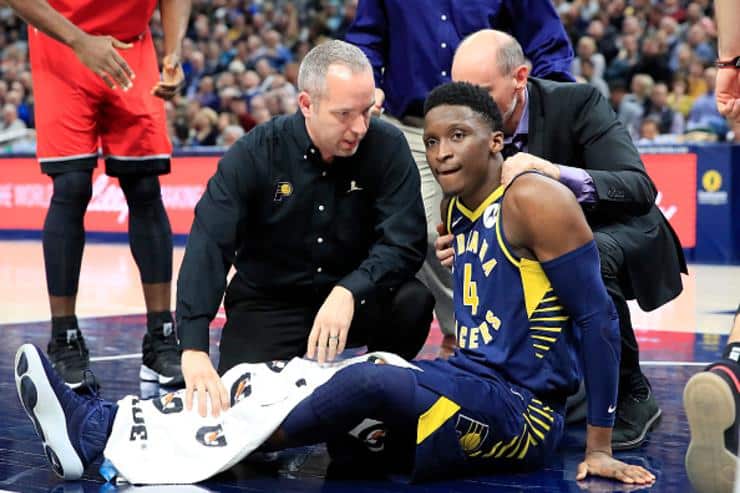Quadriceps Tendon Tears | Knee Pain Physiotherapy East Fremantle
Quadriceps tendon injuries are rare. This tendon possesses unbelievable strength as it receives attachments from all four quadriceps muscles. However, injuries can occur, and are most commonly seen in middle-aged populations involved in running and jumping sports. If anyone is squeemish, don’t look at the video below:
These tears are classified in accordance with the amount of structural damage that has occurred:
- Grade 1: Small tearing of the quadriceps tendon
- Grade 2: Moderate tearing of the quadriceps tendon
- Grade 3: Complete rupture of the quadriceps tendon. For example, this occurred in the video above. When the quadriceps tendon completely ruptures, the quadriceps muscles are no longer attached to the kneecap and the athlete will be unable to straighten the knee.
When a quadriceps tendon tears, there is often a tearing or popping sensation. Other symptoms include:
- An indentation at the top of the kneecap at the site of the tendon injury.
- Your kneecap may sag or droop because the tendon is torn.
- Difficulty walking or a complete inability to walk due to the knee buckling.
- Bruising
- Tenderness
- Cramping
I’m not going to embed the video here, because it’s not the nicest thing to see – but if you’re interested to actually see what a quadriceps tendon rupture looks like in surgery, look here: https://www.youtube.com/watch?v=Bvz_Un_fRAU
Mechanism of Injury
Typically, these injuries occur in the following ways:
- Landing from a jump when the leg is fixed and the knee is slightly bent. The force to the tendon applied during landing exceeds the capacity of this tendon, and like a rope under too much strain, it frays (partial tear) or breaks (complete rupture).
- A direct fall onto the quadriceps tendon, or a landing where the knees are forcefully bent can also injure the tendon.
However, these injuries usually only when there is an underlying condition/weakness affecting the tendon. For example, there may be an underlying quadriceps tendinopathy, which are highly common in jumping sports. The tendon injury pathology is described here. If an athlete has been dealing with an ongoing tendinitis/tendinosis/tendinopathy diagnosis, depending on the stage of the injury, this can be associated with decreased strength through the tendon with an increased likelihood to tear.
Treatment
Complete ruptures will require a surgical repair to the torn tendon, which will reattach the torn tendon to the top of the kneecap. This should be performed soon after the injury to prevent scarring and shortening of the quadriceps tendon. If too longer period has passed since the injury (often greater than 1 month), the surgeon may be required to use tissue grafts from elsewhere on the body to add further length to your quadriceps tendon. The recovery time for these injuries is generally between 6 and 12 months, with most everyday people requiring 12 months to reach their rehabilitation goals (return to sport/running etc).
The recovery timeframe for incomplete tendon injuries generally depends on the size of the tear, your age and your activity levels. A brief period of immobilisation may be required in the case of significant tendon tears that do not rupture. Physiotherapy aims to restore normal range of movement through your knee, and regain strength in the quadriceps tendon. In addition, many athletes who present with these injuries have a quadriceps dominant pattern of jumping and moving and a significant underlying weakness in their gluteals and hamstrings. It is important to balance strength in these areas in order to reduce the amount of strain applied to the quadriceps tendon during running and jumping movements.
At Move Physiotherapy we are experts at diagnosing and rehabilitating knee pain. Unlike other physiotherapy clinics, we are fully equipped with a rehab gymnasium and can guide and supervise your exercise rehabilitation. We also offer sports massage, dry needling and other physiotherapy treatments.
Book your appointment online today.

